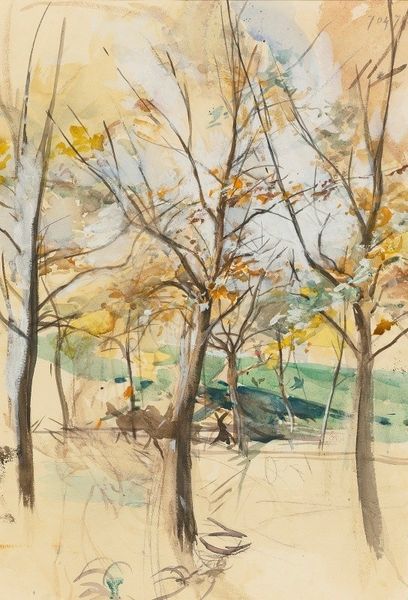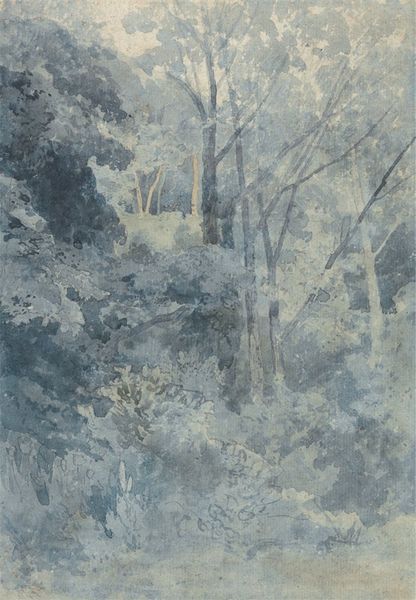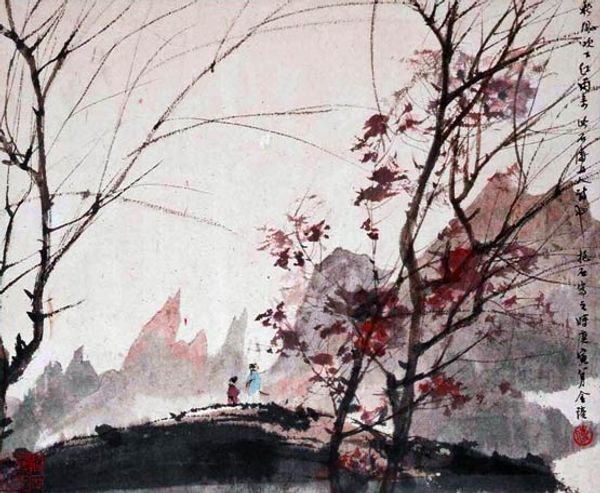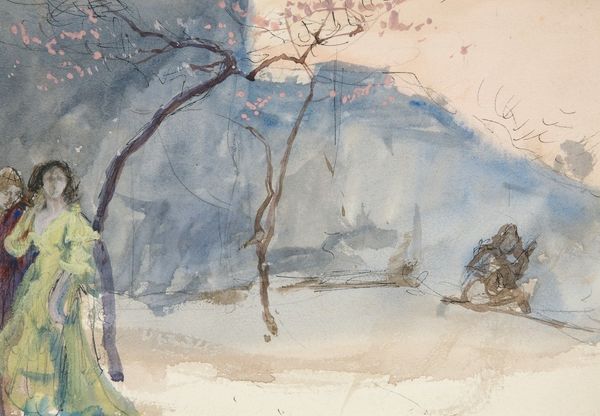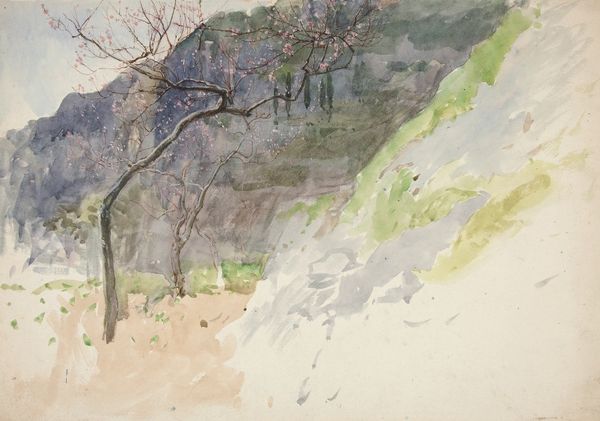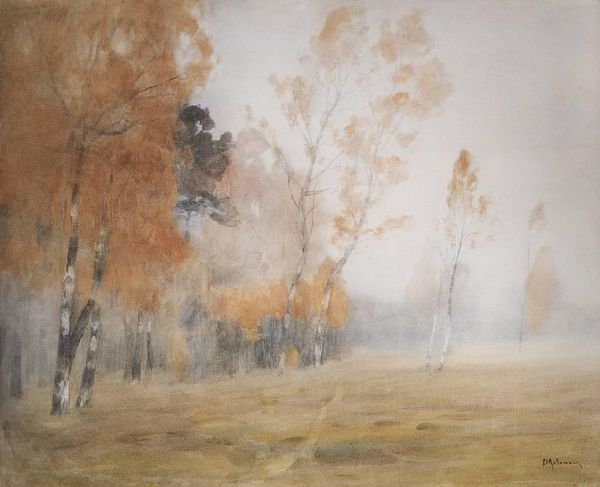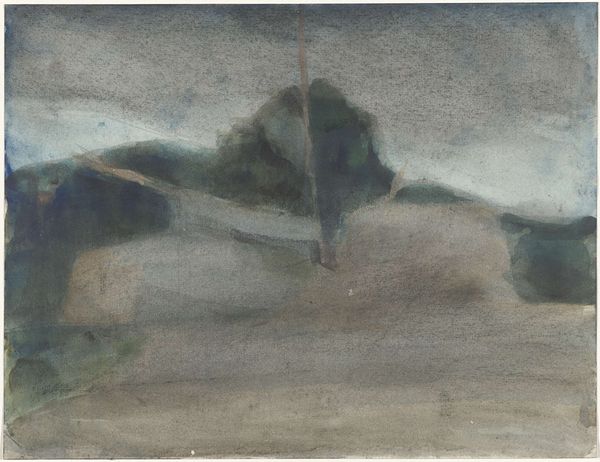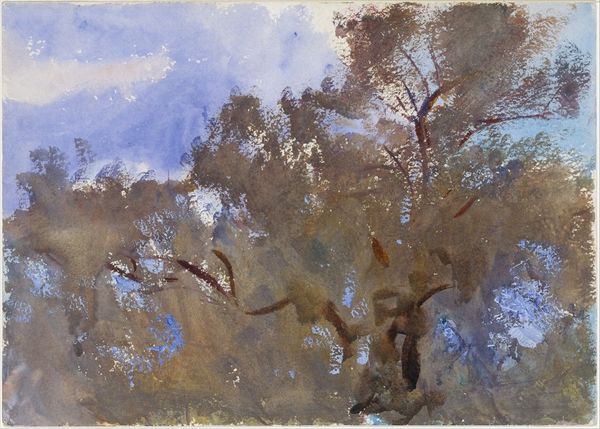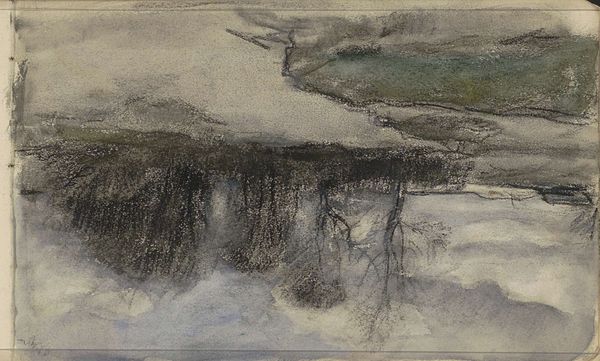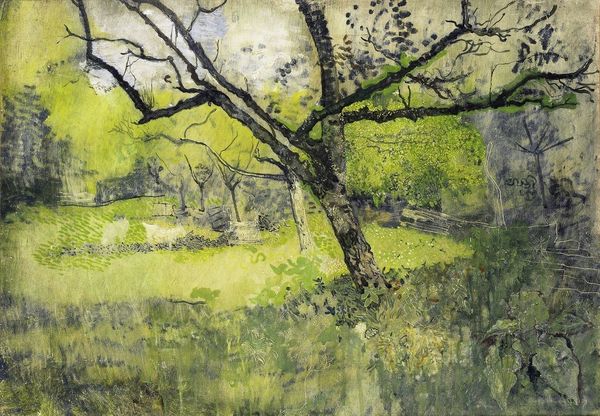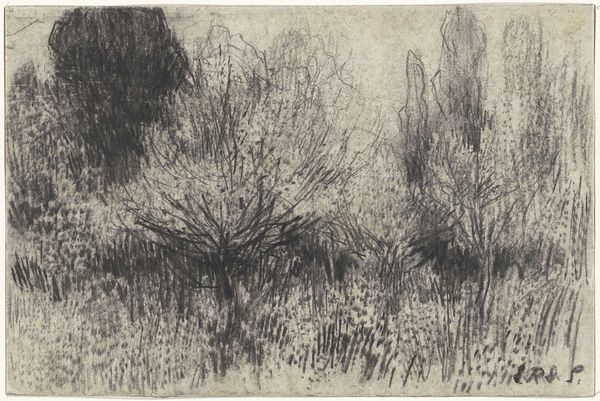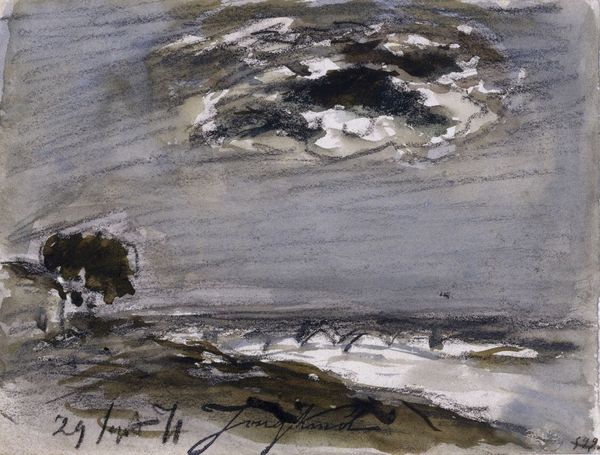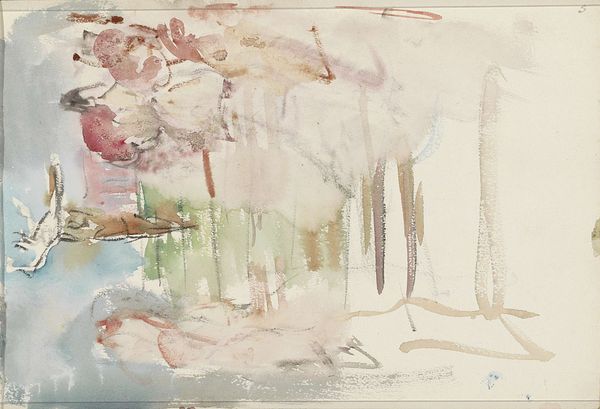
mixed-media, painting, watercolor, ink
#
mixed-media
#
painting
#
asian-art
#
landscape
#
watercolor
#
ink
#
geometric
#
mixed media
Copyright: Public domain China
Curator: It feels… wistful, like a memory fading into mist. All soft edges and gentle washes of color. Editor: Indeed. What we have here is Fu Baoshi’s “Crows in a Willow,” a mixed-media painting from 1944, utilizing ink and watercolor to conjure this delicate scene. There is a strong social context to consider; the war was still raging as Baoshi developed his distinct style. Curator: War as seen through the eyes of birds, perhaps? Those dark, feathered clumps nestled in the bare branches...they become almost like watchful eyes amidst the chaos of it all. Are they grieving or simply observing? There is a quietness to the painting, that is unnerving. Editor: The motif of the crow does frequently appear in Chinese art, sometimes associated with mourning. Here, it may reflect a sense of melancholy, echoing China's wartime experience. Baoshi would later embrace socialist realism; interestingly enough, it was during this era he developed the technique of 'Baoshi cun', a term we now use to describe this rugged brushwork style of his. Curator: I can see it; that expressive looseness gives the willow such a stark, spindly character. The branches almost vibrate, which contrasts beautifully with the subtle gradations in the misty background. It is simple in its form and technique but complex in emotions. Editor: Precisely. This exemplifies Baoshi's fusion of traditional techniques with modern sensibilities. He transformed landscape painting into a vessel for expressing the emotions of a nation in turmoil. Curator: There's such elegance in its restraint, isn't there? Like poetry whispered on a windy day, about war and remembrance and sorrow all blurred at once. Editor: Yes, and to contextualize it, Baoshi became one of the foremost figures in what became known as the "New Chinese Painting" movement, attempting to integrate Western styles with traditional practices, moving forward the cultural expressions during that era. Curator: This little painting reminds me that even in the harshest seasons, something still watches, something still remembers, even when everything is gone or being threatened. Editor: It’s remarkable how a seemingly simple arrangement of ink and color can transmit such profound historical and individual reflection.
Comments
No comments
Be the first to comment and join the conversation on the ultimate creative platform.
